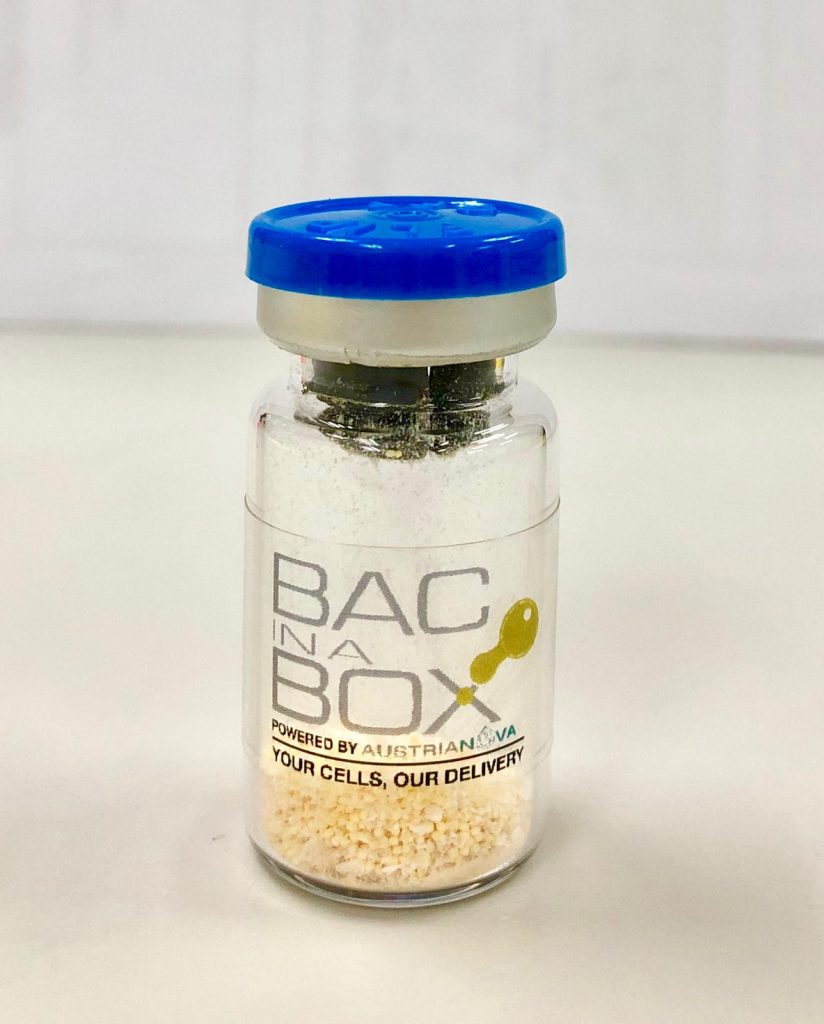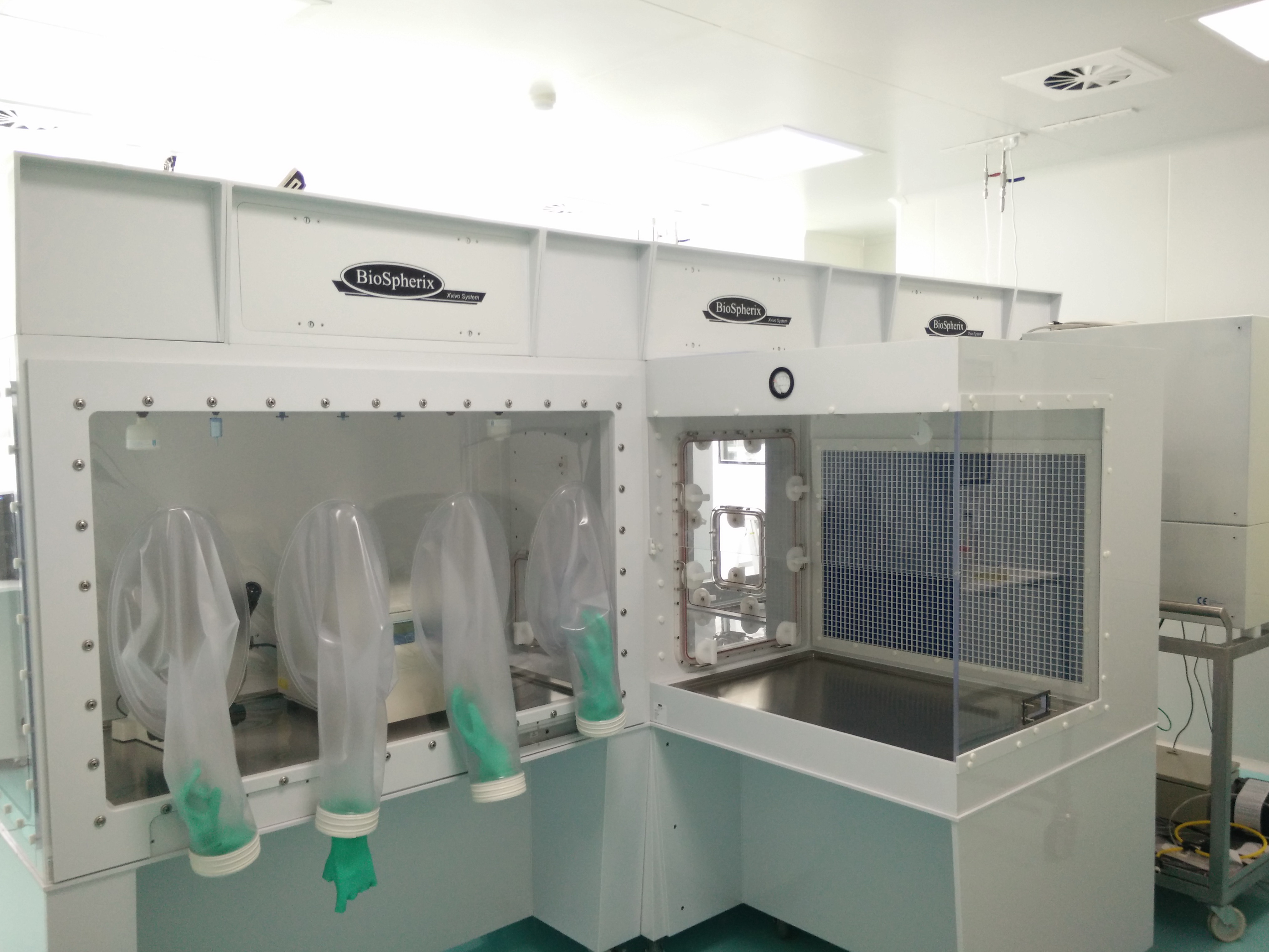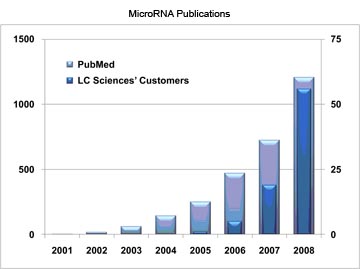In a new study published online in Nature Communications, researchers from Sichuan Agricultural University and LC Sciences report the miRNAome in porcine adipose and muscle tissues. The report provides a valuable epigenomic source for obesity prediction and prevention and furthers the development of pig as a model organism for human obesity research1.

Scientists now know that the genetic code alone isn’t responsible for adult phenotype or even the offspring of these adults. Epigenetics refers to changes in gene expression affecting phenotype that don’t involve changes to the DNA nucleotide sequence itself, and yet are heritable. DNA methylation, histone modification and microRNA (miRNA) expression are examples of epigenetic mechanisms that have recently been identified as important regulators of gene expression in many biological systems.
Obesity is a huge problem worldwide. Recently, the World Health Organization reported that obesity levels doubled in every region of the world between 1980 and 2008, spurring rates of non-communicable diseases such as diabetes and cancer that now account for almost two out of three deaths globally. It has become evident that epigenetic factors, such as D N A methylation and miRNA expression, have essential roles in obesity development.
Now, a team led by Researchers at the Institute of Animal Genetics and Breeding, Sichuan Agricultural University, China has used a pig model to investigate the systematic association between epigenetic regulators and obesity. Pigs are an excellent model system to study obesity due to their similar physiology to ours including: metabolic features, cardiovascular systems, and proporÂtional organ sizes . The researchers generated a genome-wide D N A methylation map as well as miRNA expression and gene expression maps for adipose and muscle tissues from three pig breeds living within comparable environments but displaying distinct fat levels.
The miRNA expression portion of this project was supported by team members from LC Sciences’ Hangzhou, China lab. LC Sciences is a specialist in miRNA sequencing and expression profiling and has previously collaborated with the group from Sichuan Agricultural University. In 2010 they performed a comprehensive search for porcine miRNAs that extended the repertoire of pig miRNAome to 777 unique miRNAs and enabled an atlas of miRNA regulation functions and networks to be constructed which has laid the groundwork for future miRNA studies in pig models2. Additional collaborations with the group include investigations of miRNA expression in porcine gonads3 and human breast milk4. LC Sciences has worked with other agricultural groups in China as well, including: Huazhong5, Yangzhou & Nanjing6 Universities on their porcine miRNA studies.
In the current study, numerous miRNAs having known or potential roles in obesity were identified. Additionally, the researchers found a differentially methylated region in males compared with females. This region is located in the promoter of a miRNA cluster that includes adjacent miR-99b, let-7e and miR-125a. Although no previous evidence exists for a direct relationship of these three miRNAs to obesity, the key functions and targets of these miRNAs potentially contribute to sexual differences in obesity development.
Dr. Qiulei Lang, Head of LC Sciences operations in Asia commented, â€miRNA has been a focus of LC Sciences’ since 2005. Back then we realized its importance and so have tailored our capabilities to support agricultural customers worldwide in their miRNA research. A proprietary RNA-Seq data analysis pipeline that was developed by LC Sciences enabled us to make sense of the tremendous amount of small RNA sequencing data that we generated in this study.â€
That data analysis shows global epigenetic similarity and difference among breeds, sexes and anatomic locations. The epigenetically regulated regions in promoters are highly associated with obesity development via expression repression of both known obesity-related genes and novel genes. This comprehensive map provides a solid basis for exploring epigenetic mechanisms of obesity.
Dr. Mingzhou Li from Sichuan Agricultural University , said, “The domestic pig is of enormous agricultural significance and provides valuable models for human obesity research. Recently, epigeÂnetic factors, especially DNA methylation and miRNA regulation have gained a greater appreciation as an alternative perspective on the aetiology of complex diseases. Although little is known about the transcription start site of primary miRNA transcripts, our results suggested that DNA methylation in 5′ upstream of stem-loop precursor could have a role in transcriptional silencing of mature miRNA. â€
In the modern industry, pigs have undergone strong genetic selection in the relatively inbred commercial lines for lean meat production, or in some cases, for adipose production, which has led to remarkable phenotypic changes and genetic adaptation, making these breed lines a perfect model for comparative studies.
Principal Investigator Ruiqiang Li from Peking University, said, “This work will serve as a valuable resource for future functional validation, promoting further development of pig as a model organism for human obesity research, as well as maximizing the economic benefits in producing high quality pork.â€
About Sichuan Agricultural University - Sichuan Agricultural University (S IC AU) is a university located in Ya’an city, Sichuan province, China and part of the “Project 211â€, specialized in biotechnology and agricultural sciences, and as well as offering degrees in physical science, engineering, economics, management, veterinary medicine, liberal arts, pedagogy and law. For more information, please visit www.sicau.edu.cn.
About LC Sciences – LC Sciences is a leader in miRNA discovery and profiling offering flexible services and delivering high quality results based on our innovative µParaflo® custom microarray platform and the latest next-gen sequencing technologies. We have developed complementary bioinformatics tools necessary for extracting biological and functional information from large microRNA and miRNAome data sets. LC Sciences provides microfluidic made-to-order microarrays and delivers the most up-to-date genomics application tools for advancement in basic science and applied biomedical fields. For more information, please visit www.lcsciences.com.
-
- Li, M. et al. (2012) An atlas of DNA methylomes in porcine adipose and muscle tissues. Nat Commun [Epub ahead of print]. [ abstract ]
- Li, M. et al. (2010) MicroRNAome of porcine pre- and postnatal development. PLoS One 5, e11541. [ article ]
- Li, M. et al. (201 1 ) Repertoire of porcine microRNAs in adult ovary and testis by deep sequencing. Int J Biol Sci, 7(7), 1045-1055. [ abstract ]
- Zhou, Q. et al. (2012) Immune-related Immune-related microRNAs are abundant in breast milk exosomes. Int J Biol Sci, 8(1), 118-123. [ abstract ]
- Luo L. et al. (2010) Microarray-based approach identifies differentially expressed microRNAs in porcine sexually immature and mature testes. PLoS One 5(8), e11744. [ article ]
- Zhou B, Liu HL, Shi FX, Wang JY. (2010) MicroRNA expression profiles of porcine skeletal muscle. Anim Genet 41(5), 499-508. [ abstract ]
Via EPR Network
More Biotech press releases










